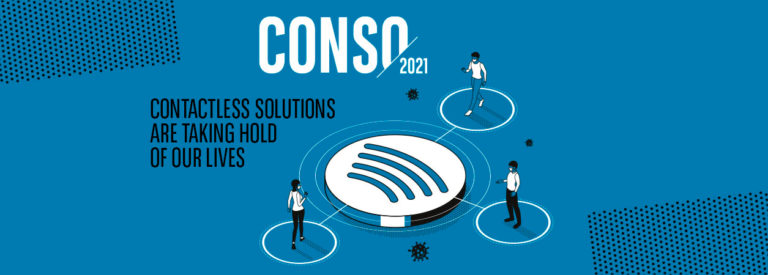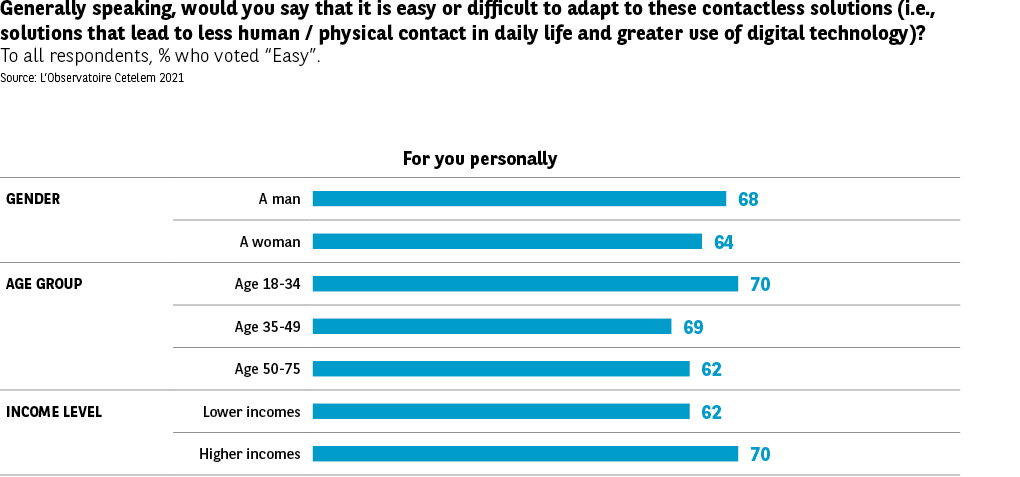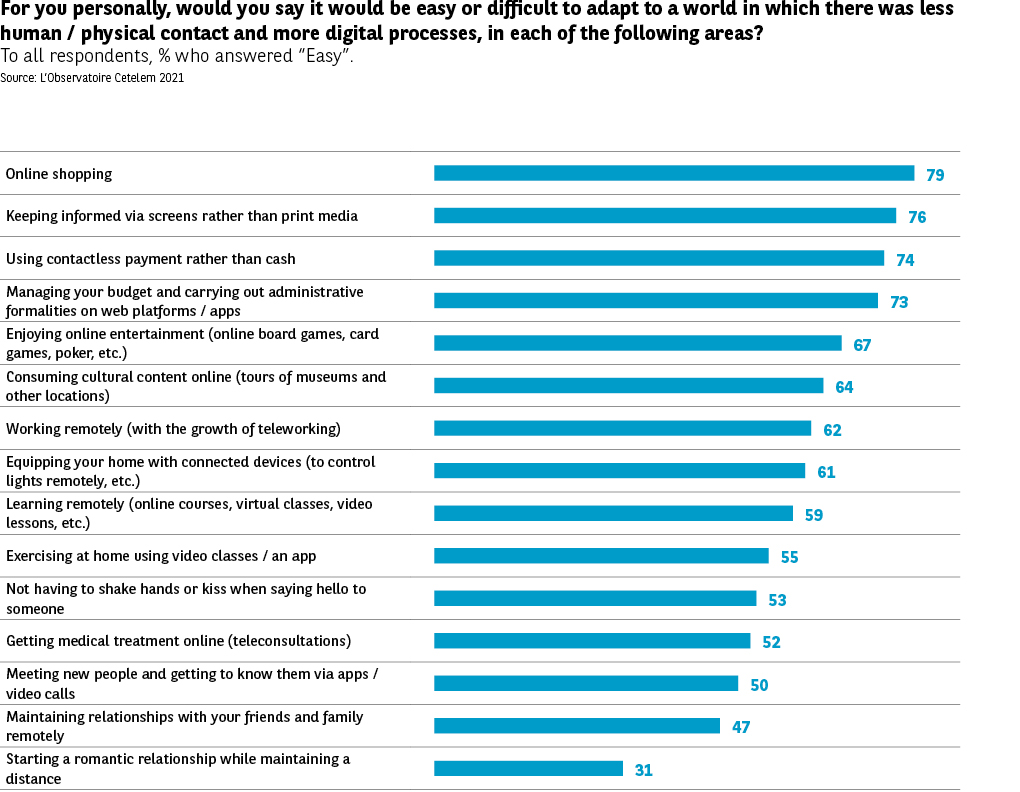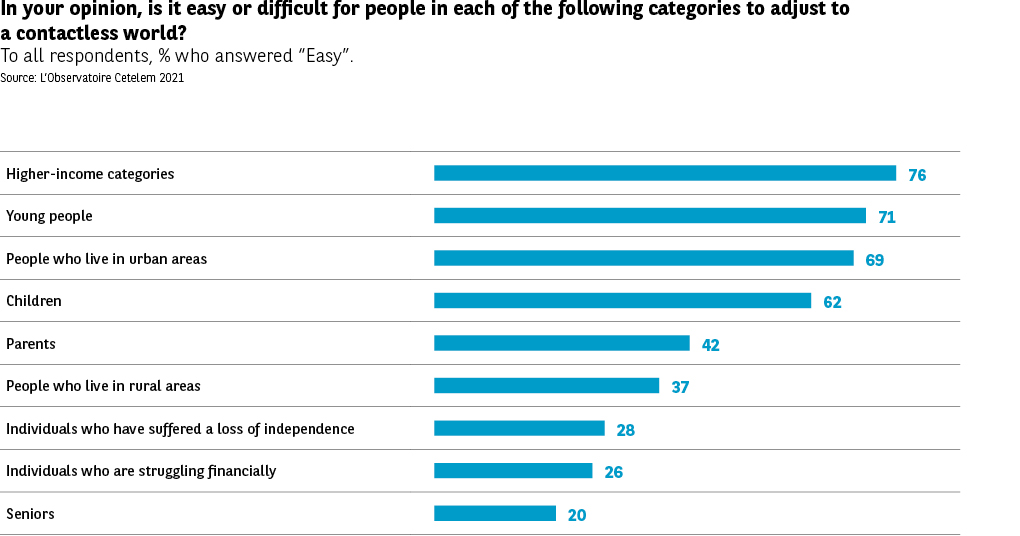Adaptability correlates with age and income level


In any case, adapting is easy…
The sense that individuals are personally able to adjust to their new contactless lives applies to the lion’s share of daily activities. For most items, favourable opinions are expressed by a majority of respondents, the exceptions being maintaining ties with friends and starting a romantic relationship from a distance.
Irrespective of gender, age group or income level, two-thirds of Europeans find it easy to adjust to contactless practices (Fig. 27).
Once again, e-commerce is the most popular application (79%) (Fig. 28). And, as seen previously, the French are the least fond of online shopping (63%). This is not the top-placed item in their ranking and the same is true for the Belgians.
Seeking information, making payments and online budget management and administrative formalities are clustered close behind (76%, 74% and 73%). The Portuguese are particularly happy with these facilities, while the French and Belgians are again more resistant.
The other possibilities offered up by contactless solutions are also very popular, even if enthusiasm for them is generally less pronounced. At the bottom of the ranking are those that relate to human relationships in their most intimate forms. We will look more closely at these in the third part of the survey.
… but not for everyone
People who live in rural areas, who have suffered a loss of independence or who are struggling financially find it harder to adjust to contactless living (Fig. 29). This is an opinion voiced in all the countries covered by the survey, with the Czechs responding almost unanimously to this question (87%).
Young people, meanwhile, will find it easiest to take advantage of contactless living. 71% of Europeans are of this view. The “iGeneration”, a term coined by psychologist Jean Twenge, were born with a smartphone in their hand and hold a decisive “genetic” digital advantage. The qualitative interviews conducted for this survey highlight the fact that opinion on this topic is divided regardless of the generation. However, more contrasting opinions can be observed when we compare countries. 82% of Czechs are of this belief, but only 57% of Belgians agree.
Urbanites place third in terms of their perceived ability to adjust to the rise of contactless living (69%). The Czechs and Belgians can again be found at the two extremes (77% and 58%).
Children complete the top four in this adaptability ranking.
But there are also social categories whose capacity to adapt is seen in a much less positive light. Fewer than 1 in 2 Europeans believe that parents, inhabitants of rural areas, people who have suffered a loss of independence and those struggling financially will be able to cope with these changes. Just 1 in 5 think that seniors will be able to adapt. The countries in the Northern group are slightly more optimistic than the rest. Those in the Central European group of countries, which often have more rural populations, are very pessimistic.
These results point to the existence of a digital divide, a tangible component of which is contactless living, which is only seen as advantageous to young people, urbanites and the wealthy. These are the populations that increasingly characterise European cities today.
1 in 5 Europeans believe that seniors will be able to adjust to contactless living.
KEY FIGURES
- 8 out of 10 Europeans state that contactless solutions are present in their daily lives
- 44% of Europeans acknowledge the benefits of contactless practices when it comes to health and safety.
- 55% of Europeans do not see the appeal of contactless living
- Age 50-64: The age group that is most likely to view contactless living as a constraint
- More than 1 in 2 Europeans believe that the rapid expansion of contactless practices is good for the environment.



